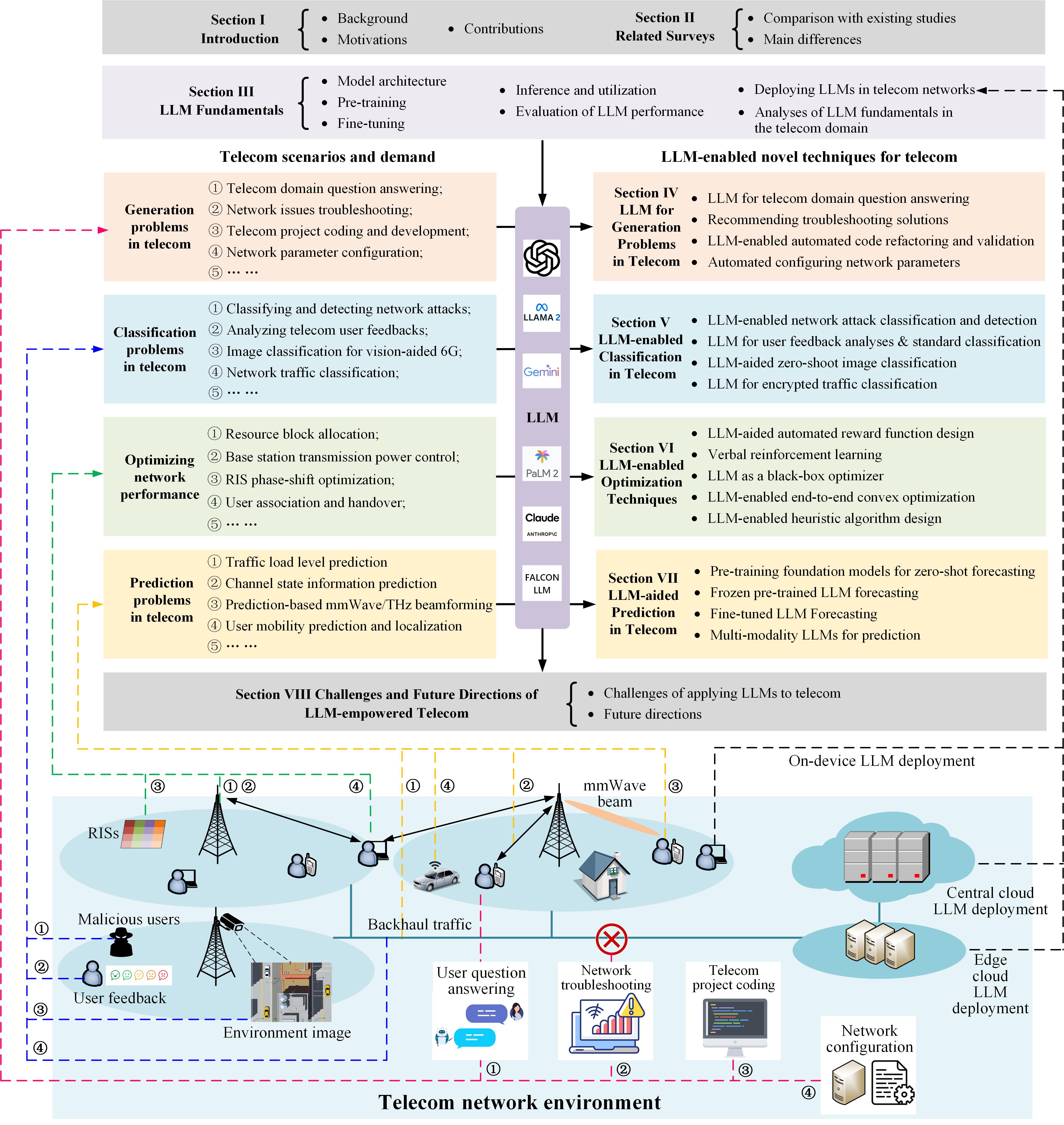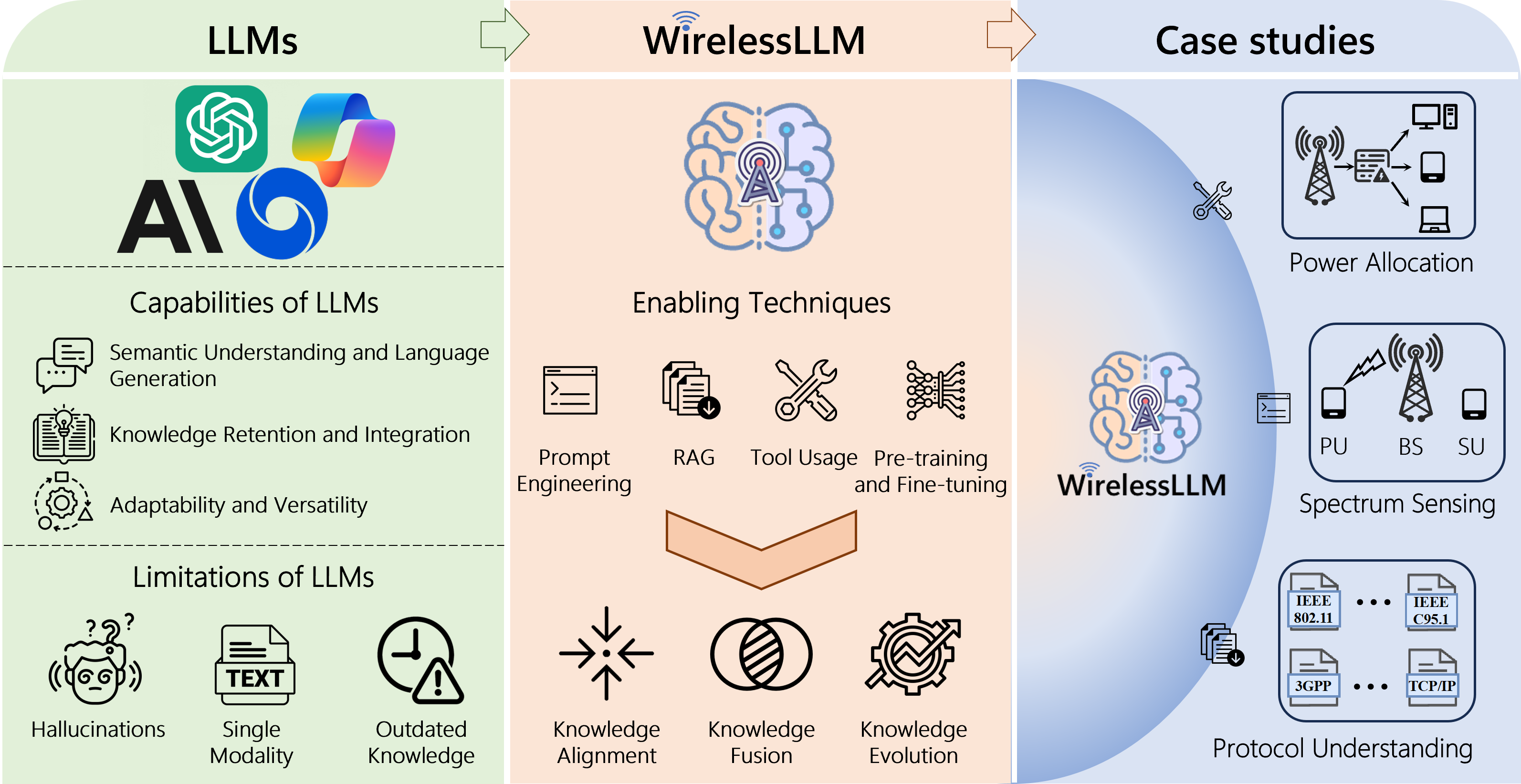Large Language Models (LLMs) for Semantic Communication in Edge-based IoT Networks

0

Sign in to get full access
Overview
- This paper explores the use of large language models (LLMs) for semantic communication in edge-based Internet of Things (IoT) networks.
- It proposes a framework for integrating LLMs into edge computing architectures to enable more efficient and intelligent communication between IoT devices.
- The key focus is on leveraging the semantic understanding and natural language capabilities of LLMs to enhance the performance and capabilities of IoT systems.
Plain English Explanation
The paper discusses how Large Language Models (LLMs) can be used to improve communication in Internet of Things (IoT) networks. IoT networks are made up of many connected devices, like sensors and smart home appliances, that need to communicate with each other.
The researchers propose a way to integrate LLMs into the "edge" of IoT networks, which are the devices and computing power close to where the data is being collected. By doing this, the LLMs can help the IoT devices better understand the meaning and context of the information they're sharing, rather than just exchanging raw data.
This semantic understanding enabled by the LLMs could lead to more efficient and intelligent communication between the IoT devices. For example, a smart thermostat could communicate its temperature readings to other devices in a way that they can easily interpret and respond to, without needing to manually configure complex protocols.
Overall, the paper explores how advanced language AI technologies like LLMs can be leveraged to enhance the capabilities and performance of IoT systems, which are becoming increasingly important as more of our devices and appliances get connected to the internet.
Technical Explanation
The paper presents a framework for integrating large language models (LLMs) into edge-based Internet of Things (IoT) networks to enable more effective semantic communication between devices.
The key components of the proposed framework include:
-
Edge-based LLM Integration: The researchers describe a way to deploy LLM models on the edge devices in an IoT network, rather than running them in a centralized cloud. This allows the language understanding capabilities to be closer to where the data is being generated and used.
-
Semantic Communication Protocols: Building on the edge-based LLMs, the paper outlines new communication protocols that leverage the semantic understanding capabilities to enable more intelligent and contextual exchange of information between IoT devices.
-
Adaptive and Federated Learning: The framework incorporates techniques like adaptive learning and federated learning to allow the LLMs to continuously improve their performance by learning from the data and interactions within a specific IoT deployment.
The paper presents several experiments and case studies demonstrating the potential benefits of this approach, including improved reliability, lower latency, and more efficient use of network resources compared to traditional IoT communication methods.
Critical Analysis
The paper provides a well-designed and thorough exploration of integrating LLMs into edge-based IoT networks. The proposed framework addresses several key challenges in this area, such as how to deploy and leverage the language understanding capabilities at the edge, and how to enable adaptive and federated learning to optimize the LLM performance for specific IoT use cases.
However, the paper does acknowledge some limitations and areas for further research:
-
Hardware Constraints: Deploying full-scale LLMs on resource-constrained edge devices may still be challenging, and the authors suggest investigating more efficient model architectures or compression techniques.
-
Privacy and Security: The use of LLMs in IoT systems raises potential privacy and security concerns that need to be carefully addressed, such as the risk of sensitive data leakage or adversarial attacks.
-
Scalability and Heterogeneity: As IoT networks grow in size and complexity, ensuring the scalability and adaptability of the LLM-based communication framework will be an important consideration.
Additionally, while the paper presents promising results, further real-world validation and testing would be helpful to better understand the practical implications and trade-offs of this approach in diverse IoT deployments.
Conclusion
This paper makes a compelling case for leveraging large language models (LLMs) to enhance the semantic communication capabilities of Internet of Things (IoT) systems at the edge. By integrating LLMs into the IoT network infrastructure, the researchers demonstrate how these advanced language AI technologies can enable more intelligent, efficient, and context-aware exchange of information between connected devices.
This research has the potential to unlock new applications and use cases for IoT systems, particularly in domains where rich semantic understanding and natural language interaction are important, such as smart homes, industrial automation, and environmental monitoring. As IoT networks continue to grow in scale and complexity, the insights and framework presented in this paper could help pave the way for more robust and capable edge-based IoT architectures.
This summary was produced with help from an AI and may contain inaccuracies - check out the links to read the original source documents!
Related Papers


0
Large Language Models (LLMs) for Semantic Communication in Edge-based IoT Networks
Alakesh Kalita
With the advent of Fifth Generation (5G) and Sixth Generation (6G) communication technologies, as well as the Internet of Things (IoT), semantic communication is gaining attention among researchers as current communication technologies are approaching Shannon's limit. On the other hand, Large Language Models (LLMs) can understand and generate human-like text, based on extensive training on diverse datasets with billions of parameters. Considering the recent near-source computational technologies like Edge, in this article, we give an overview of a framework along with its modules, where LLMs can be used under the umbrella of semantic communication at the network edge for efficient communication in IoT networks. Finally, we discuss a few applications and analyze the challenges and opportunities to develop such systems.
Read more7/31/2024
💬

0
Large Language Models (LLMs) Assisted Wireless Network Deployment in Urban Settings
Nurullah Sevim, Mostafa Ibrahim, Sabit Ekin
The advent of Large Language Models (LLMs) has revolutionized language understanding and human-like text generation, drawing interest from many other fields with this question in mind: What else are the LLMs capable of? Despite their widespread adoption, ongoing research continues to explore new ways to integrate LLMs into diverse systems. This paper explores new techniques to harness the power of LLMs for 6G (6th Generation) wireless communication technologies, a domain where automation and intelligent systems are pivotal. The inherent adaptability of LLMs to domain-specific tasks positions them as prime candidates for enhancing wireless systems in the 6G landscape. We introduce a novel Reinforcement Learning (RL) based framework that leverages LLMs for network deployment in wireless communications. Our approach involves training an RL agent, utilizing LLMs as its core, in an urban setting to maximize coverage. The agent's objective is to navigate the complexities of urban environments and identify the network parameters for optimal area coverage. Additionally, we integrate LLMs with Convolutional Neural Networks (CNNs) to capitalize on their strengths while mitigating their limitations. The Deep Deterministic Policy Gradient (DDPG) algorithm is employed for training purposes. The results suggest that LLM-assisted models can outperform CNN-based models in some cases while performing at least as well in others.
Read more8/12/2024


0
Large Language Model (LLM) for Telecommunications: A Comprehensive Survey on Principles, Key Techniques, and Opportunities
Hao Zhou, Chengming Hu, Ye Yuan, Yufei Cui, Yili Jin, Can Chen, Haolun Wu, Dun Yuan, Li Jiang, Di Wu, Xue Liu, Charlie Zhang, Xianbin Wang, Jiangchuan Liu
Large language models (LLMs) have received considerable attention recently due to their outstanding comprehension and reasoning capabilities, leading to great progress in many fields. The advancement of LLM techniques also offers promising opportunities to automate many tasks in the telecommunication (telecom) field. After pre-training and fine-tuning, LLMs can perform diverse downstream tasks based on human instructions, paving the way to artificial general intelligence (AGI)-enabled 6G. Given the great potential of LLM technologies, this work aims to provide a comprehensive overview of LLM-enabled telecom networks. In particular, we first present LLM fundamentals, including model architecture, pre-training, fine-tuning, inference and utilization, model evaluation, and telecom deployment. Then, we introduce LLM-enabled key techniques and telecom applications in terms of generation, classification, optimization, and prediction problems. Specifically, the LLM-enabled generation applications include telecom domain knowledge, code, and network configuration generation. After that, the LLM-based classification applications involve network security, text, image, and traffic classification problems. Moreover, multiple LLM-enabled optimization techniques are introduced, such as automated reward function design for reinforcement learning and verbal reinforcement learning. Furthermore, for LLM-aided prediction problems, we discussed time-series prediction models and multi-modality prediction problems for telecom. Finally, we highlight the challenges and identify the future directions of LLM-enabled telecom networks.
Read more9/17/2024


0
WirelessLLM: Empowering Large Language Models Towards Wireless Intelligence
Jiawei Shao, Jingwen Tong, Qiong Wu, Wei Guo, Zijian Li, Zehong Lin, Jun Zhang
The rapid evolution of wireless technologies and the growing complexity of network infrastructures necessitate a paradigm shift in how communication networks are designed, configured, and managed. Recent advancements in Large Language Models (LLMs) have sparked interest in their potential to revolutionize wireless communication systems. However, existing studies on LLMs for wireless systems are limited to a direct application for telecom language understanding. To empower LLMs with knowledge and expertise in the wireless domain, this paper proposes WirelessLLM, a comprehensive framework for adapting and enhancing LLMs to address the unique challenges and requirements of wireless communication networks. We first identify three foundational principles that underpin WirelessLLM: knowledge alignment, knowledge fusion, and knowledge evolution. Then, we investigate the enabling technologies to build WirelessLLM, including prompt engineering, retrieval augmented generation, tool usage, multi-modal pre-training, and domain-specific fine-tuning. Moreover, we present three case studies to demonstrate the practical applicability and benefits of WirelessLLM for solving typical problems in wireless networks. Finally, we conclude this paper by highlighting key challenges and outlining potential avenues for future research.
Read more6/18/2024